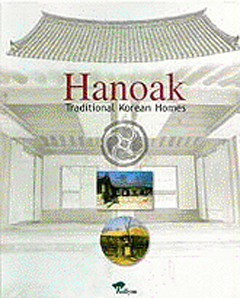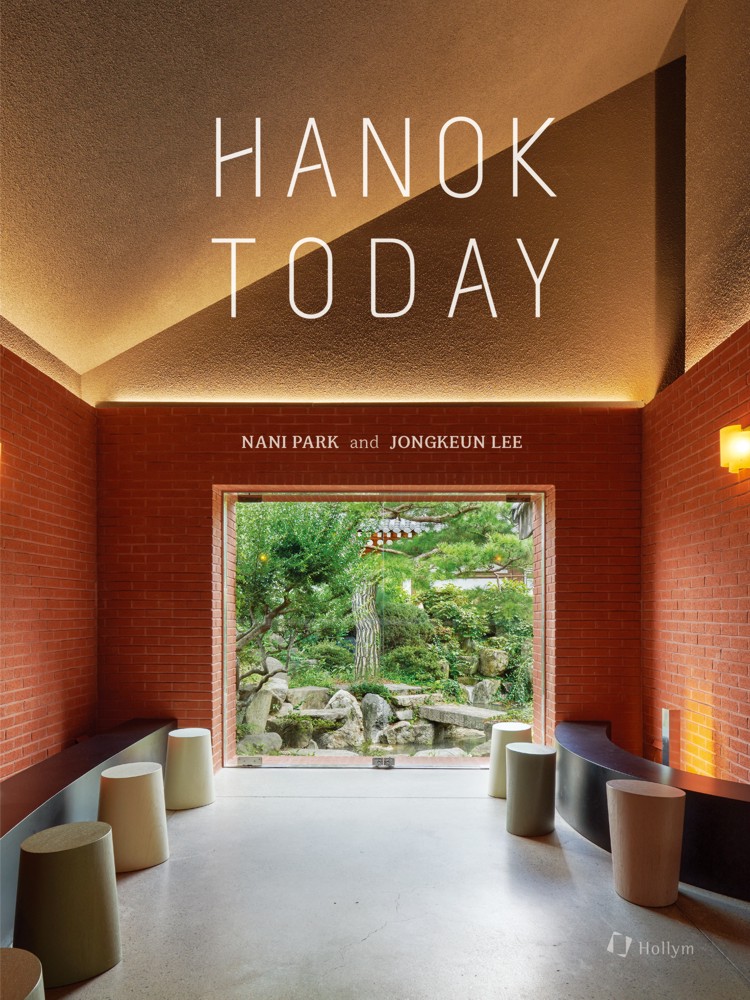- ANGEBOTE
- K-Pop Spezial
- Han Kang
- Deutsche Bücher
-
Englische Bücher
- KOREANISCH LERNEN
-
Architektur
- Bildbände
- Flora & Fauna
- Geschichte
- Gesellschaft
- Kinderbücher
- Kochbücher
- Koreanisches Kino
- Kunst & Kultur
- K-Pop & Musik
- Landkarten & Atlanten
- Literatur
- Nachschlagewerke
- Nordkorea
- Politik & Wirtschaft
- Reiseliteratur
- Religion & Philosophie
- Taekwondo & Hapkido
- Zweisprachig: Korean. / Englisch
- Koreanische Bücher
- Wörterbücher
- Geschenke, Papeterie und mehr
Koreanische Architektur, modern und historisch
Filter
–
Hanoak: Korean Traditional Homes
49,00 €*
This book has been written by the faculty members who teach housing and interior design in several Korean universities to inform the world on the Korean traditional house and interiors. The main chapters are on the Korean traditional way of space planning and furniture arrangement. Also, the chapters focus on the fact that nature and socio-cultural background have been the major factors in forming the Korean traditional house plan and furniture design.
The chapters in this book mostly cover the style of the typical upper class houses in the Chosun dynasty. The upper class houses represent the best form of Korean traditional housing including the interior space planning and furniture, the colors and patterns, and the house style, since they had been built without any financial limitations.
The story of the Traditional Korean Home
Traditional Korean house presents a comprehensive view of traditional Korean homes, dealing with topics ranging from the cultural and philosophical framework from which architectural design and layout derive from the uniquely Korean aesthetic sensibilities which imbue life, color, and patterns into the furnishings and accessories.
By incorporating the philosophies and lifestyles of the past, the interior spaces of the traditional Korean House conveyed a sense of ease and comfort girded with strength of character. An understated charm imbued the near-empty appearance and beauty sprang from harmonizing into the whole the natural or nature-inspired shapes and colors and textures of unadorned spaces.
Thus, the Korean traditional house, that is derived from Korean philosophy of life, exhibits unique and apparently paradoxical characteristics that seem very "full", yet "empty" at the same time, and seem "weak" on the outside space shows a dynamic energy and balances, which is very unique, and which can not be found in any other country. This unique traditional house that has been formed through a long period of time possesses practicality and artistic beauty, and we hope that those who visit Korea can see the merits of the Korean traditional house. This book will guide those who search for Korean tradition, practicality, and beauty of the traditional houses that were formed in its long history.
%
Hanok Today
42,90 €*
49,90 €*
(14.03% gespart)
What does hanok mean to today’s generation? Older generations may have memories of living in a hanok as a child or visiting relatives who lived in one. However, for younger people who have been exposed to hanok in a similar way culturally as they have been to Buddhist temples and palaces, hanok are often thought of as historical artifacts that need to be preserved in their old, taxidermized form.Recently, there have been an increasing number of hanok that break this perception and have a direct connection to young people in a friendlier, more attractive way. This is the result of owners who have broken away from the stereotype of traditional hanok and created their own unique hanok. Today, some owners are not only using hanok as residential spaces but also for commercial purposes, such as restaurants, cafes, offices, accommodations, and galleries. At the same time, they are contributing to preserving hanok and revitalizing local culture. From foreigners who arrived in Korea and fell in love with hanok, to those who created new hanok by designing and transforming them to suit their own purposes, the diverse ways of life and mindsets of these people make us rethink what hanok are. The beautiful harmony between tradition and modernity that is expressed through the passion and creativity of these people shows the infinite possibilities of hanok and gives us a glimpse into their future.Hanok Today is not an informational book that answers all of your questions with detailed descriptions about every hanok in every photo. Rather, the authors distill the individuality and essence of each hanok and beautifully arrange the images to convey the meaning of the space, inviting readers to see, feel, and think for themselves. Follow along with the text and photographs through the eyes of the two authors and add your own interpretation to them as you go.About the authorsNani Park was born in Korea but grew up in Hawaii, which gives her a special perspective as both an insider and outsider of Korea. Nani lived in a hanok when she was young and first created a book about hanok when she noticed the lack of published material on the traditional Korean houses (hanok). Currently residing in Seoul, she has since published several hanok related books to share her experiences and appreciation of contemporary daily hanok life. An award-winning illustrator and art educator with a Master’s degree in fine arts from the School of Visual Arts in New York, Nani has been in the art industry for over two decades. She continues to express her art in different media, as seen in this book. Excerpts from her hanok books have continued to be republished in the newspaper JoongAng Ilbo where she is currently acting as a guest contributor for the column, “Nani Park’s Hanok Story.” Jongkeun Lee graduated from Chung-Ang University’s Department of Photography and the graduate school of the same university. He runs a photo and video production company called GuruVisual Co., Ltd., and also teaches advertising photography at his alma mater. In 1995, he began working as a photo director, doing the covers and pictorials of Marie Claire, Maison, and Sulwhasoo magazines. Today, he is currently working for the monthly magazine Casa Living. He has long been actively engaged in product, architecture, and food photography, and has worked on many familiar advertising campaigns as a photographer. He has also taken photos of important cultural heritage such as Hunminjeongeum Haeryebon and Hyewon Hwacheop. Lee’s photography style involves deeply observing the subject and expressing it in warm and profound tones through an artistic interpretation.
On the Road in South Korea
34,90 €*
Just prior to the flight of Mark Dake’s parents from Toronto to visit him in Seoul - where he was teaching English - his mother phoned to ask if they needed to get inoculated for disease. Realizing how little North Americans know about South Korea, Dake decided to write a travel book, to introduce the country to foreigners. He purchased an old car, and, with his best friend, Kim Heju as translator, spent an intensive, exhaustive four months driving 5,000 miles through the nation’s villages, towns, mountains, plains and islands.Along the way, he discovered some strange things: an island of lepers; a Shangril-La where locals live past 100; a seaside village where everyone is a diver. He kidnapped a dog destined to be stew, and he swam in waters where a 2,500-pound great white shark had been hauled aboard a fishing trawler. He interviewed a would-be king and an elderly woman imprisoned during the Japanese occupation. Citing overwork, Heju temporarily quit the journey after six weeks. Two other translators bailed prematurely. Dake had a million places to explore and needed answers. If fellow travelers couldn’t keep up, tough luck, it was full-steam ahead! Dake, a former reporter, has spent about twenty years between 1995 and 2022 living and working in South Korea. He leaves no stones unturned on this fascinating journey through an ancient and modern land.
About the Author
Mark Dake grew up in Toronto, Canada, playing ice hockey and tennis and hoping to make the big leagues. Not nearly proficient enough in either sport, he was forced to get a real job. He coached tennis in Canada, Austria, Germany, Qatar and the U.S., and was a newspaper sports reporter in Lake Tahoe, California. He generally didn’t stay in one place for long.
In 1995, living in Long Beach, California, Dake answered an ad in the Los Angeles Times seeking Westerners to teach English in South Korea. Three weeks later he was in Seoul. He discovered that Koreans are energetic and hard charging, and Seoul vibrant and pulsating – the city never sleeps. He taught young Korean students at an after-school academy beginning at 2:00 p.m. daily, so he got to sleep in late. Life didn’t get much better than this.
Dake has spent parts of three largely enjoyable decades living and teaching in this ancient, mountainous land. He also served as a copy editor at The Korea Herald and Yonhap, the national news agency. He occasionally spends summers teaching tennis in Toronto. He’s visited thirty-seven countries but still hasn’t figured out where to settle down.



